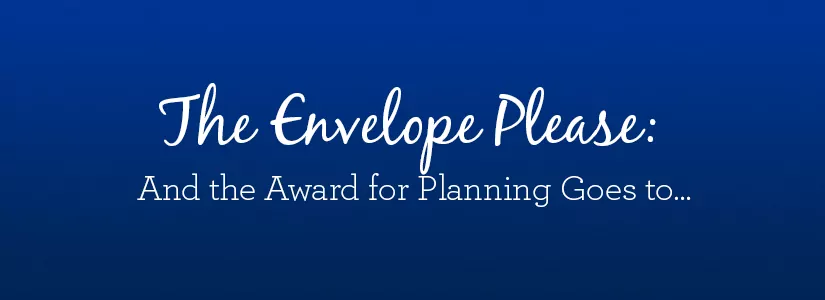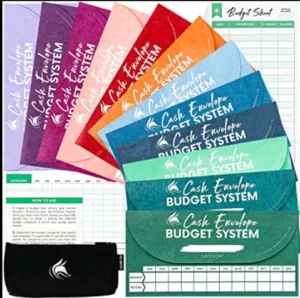- December 9, 2020
- Posted by: Hillary Feder
- Category: Engagement

Recently my brother and I received a text from our sister: “Look, Dad could have made money off his budget system.” Memories came flooding back…
When my parents got married, my dad needed to help my mom learn budgeting, apparently because her dad did not think “girls” needed to know how to manage money since the man of the house did that. My dad was ahead of his time in expecting my mom to manage her part of their household finances.
To manage our household finances, all regular weekly expenses had a separate envelope: groceries, Saturday night out, gas, dry cleaning, etc. Each envelope was marked with the title of the expense and were filled with an allotted amount of money for each payroll period. If the money was gone from an envelope before the next pay period (meaning they spent the budgeted amount in that category), there was no more spending until the next payroll. That said, there obviously had to be exceptions. I often overheard my mom say to my dad, “I had to rob Peter to pay Paul; I took money from dry cleaning to purchase groceries.”
My siblings and I grew up on the “envelope system” for quite some time. As we got older, had responsibilities, earned allowance and held first jobs outside the house, dad pushed each of us to create an envelope system for our expenses: auto expenses, outings with friends, clothes, savings, etc. (all of the things we wanted but didn’t needed).
When my Dan and I first married, I brought the envelope system with me. When we were young and it was harder to make ends meet, the envelope system helped to visually align to our income and expenses. It was a straightforward approach that worked for us and helped us establish long-term habits and goals.
When you think about the envelope system, you might see what I see—nothing more than a planning system. Planning systems bring discipline, accountability, and focus to important personal and professional goals. Think about business issues that require well developed plans, such as employee engagement, return to work plans, communicating with employees who are all working remotely during a pandemic and more.
For any type of planning system to be effective, it needs to be a living, breathing document that is implemented with consistency and reviewed annually to account for shifts in industry trends, the economy, and people’s expectations (both your workforce and your client base). The envelope system has provided a proven foundation for enabling clients to visualize how “people” interface with their company. We use this approach to help them shape strategies and implementation processes that create engagement, recognition and ultimately the experience they want their key stakeholders (employees, clients, supply partners, BOD) to have with their company.
When you are intentionally and strategically focused on your people planning system and implementation process you can expect three things to occur. You will:
- create more time to engage in other elements of your responsibilities – simply because you can work your plan, so you won’t need to “think” about what you are going to do;
- spend less and invest more – because your plan eliminates inconsistent shooting from the hip and optimizes resources (financial and people); and
- create consistency – as each touch point is well thought out and contributes to the bigger picture.
We are rounding the corner on 2020. Do you have a people plan in place for 2021? A well thought out system and implementation process that is dialed in to engage, recognize, and create the experience you want for your key stakeholders will give back more than you can anticipate up front. Whether you are working to build deeper client relationships or engaging your internal team or any other stakeholder, the key to success is planning.
Tools to help you develop your plan:
- Take our client experience assessment and/or our employee experience assessment to get some high level insight to help you focus
- Examine how you can implement our system planning approach
- Review ideas for a recognition in a recognition system
- Take a deeper dive into developing a system

If developing your own system is more than you can take on, call us to start the conversation.

